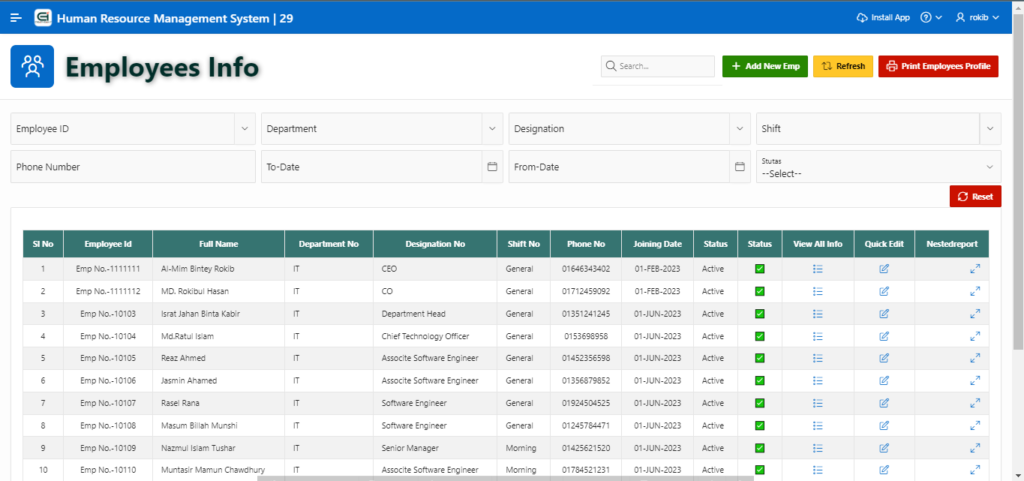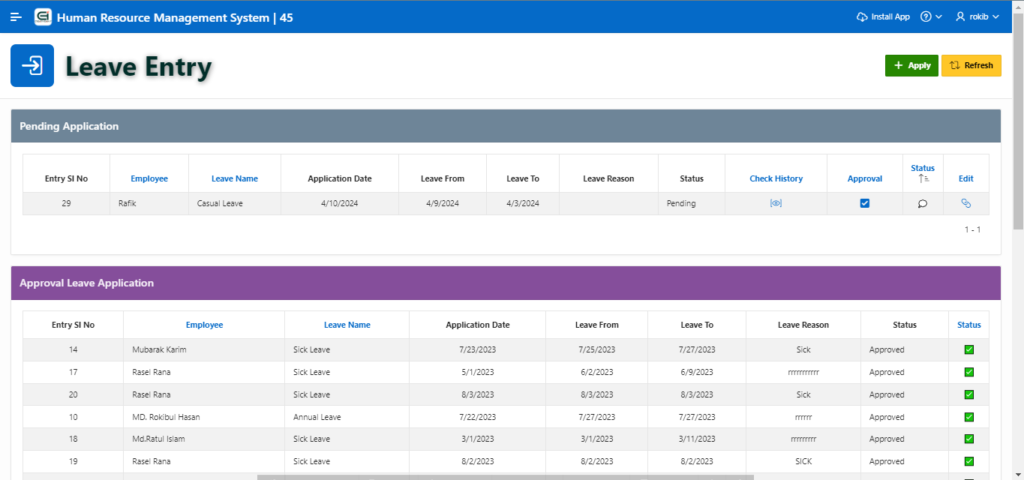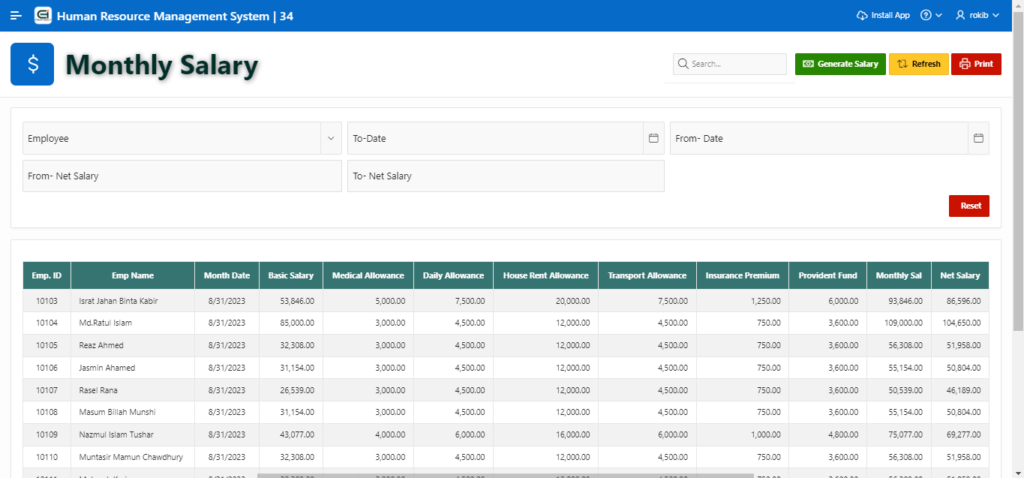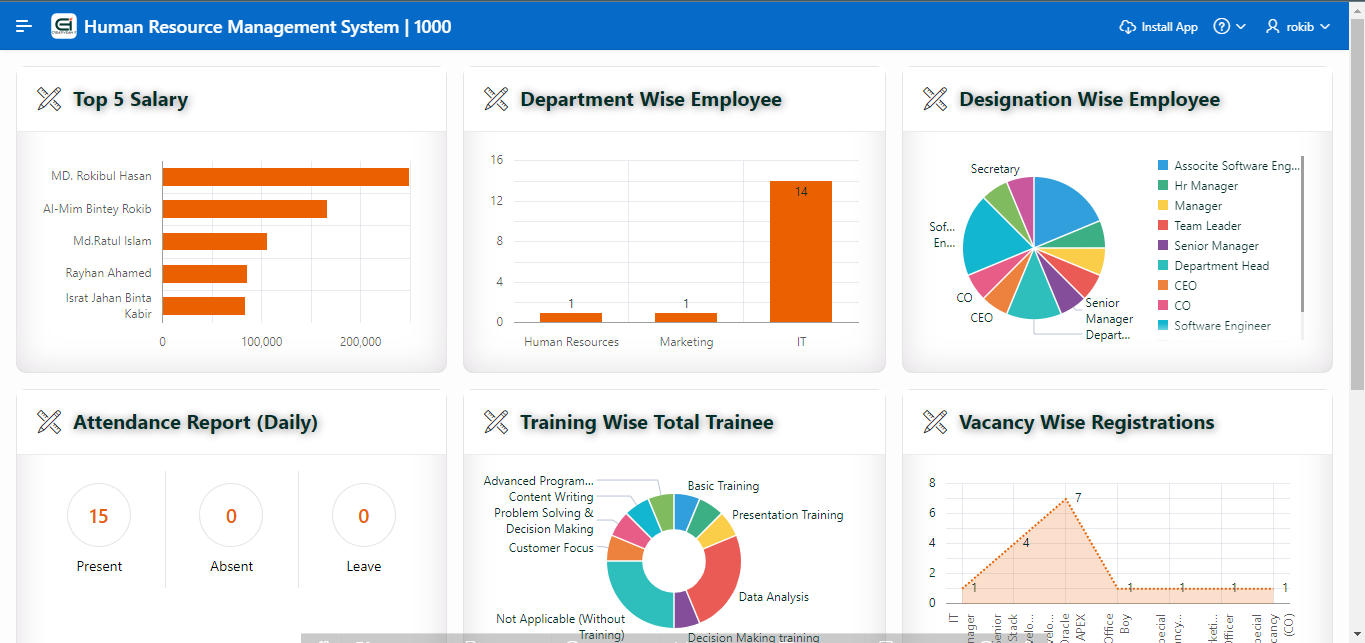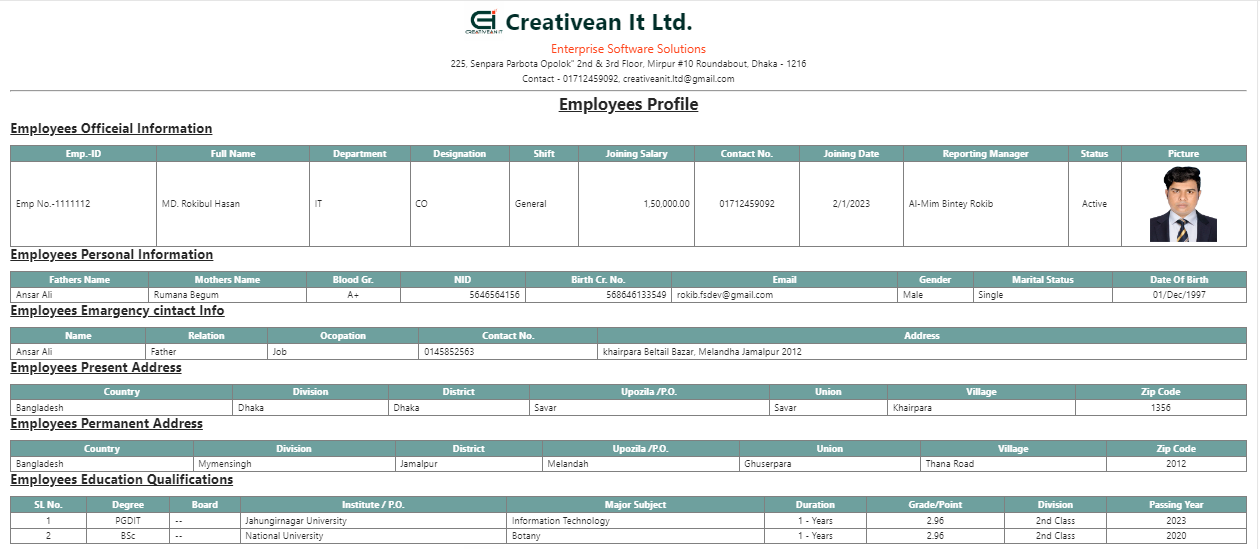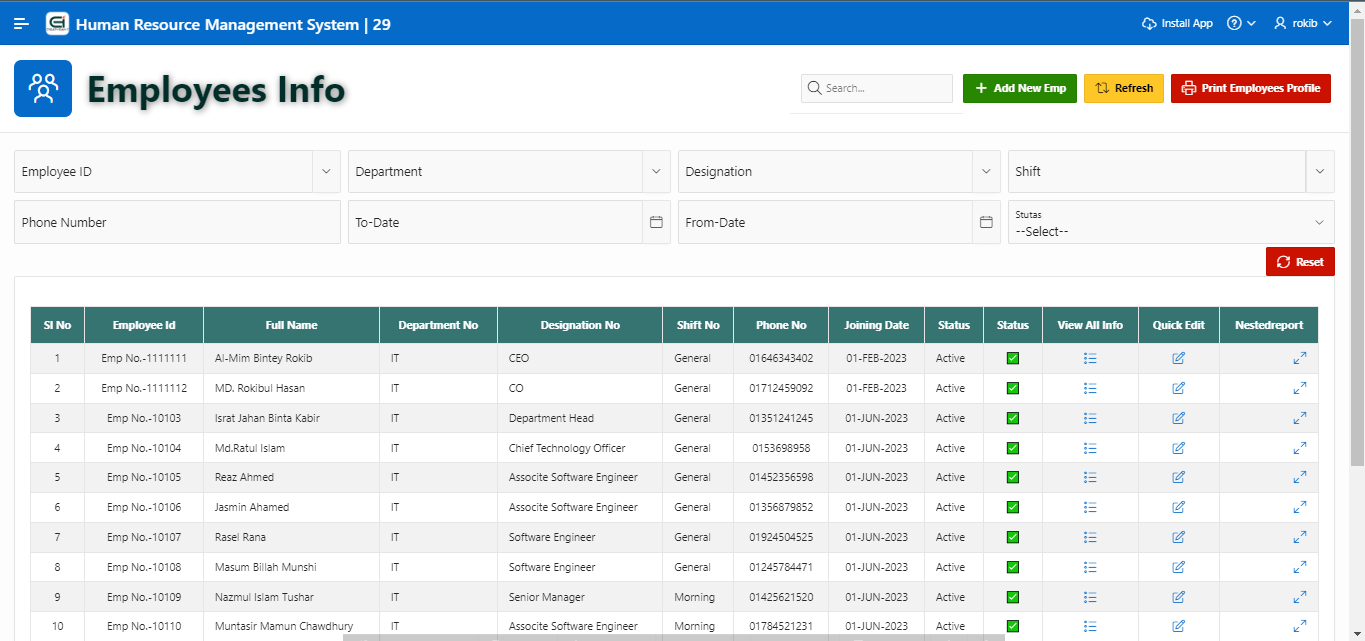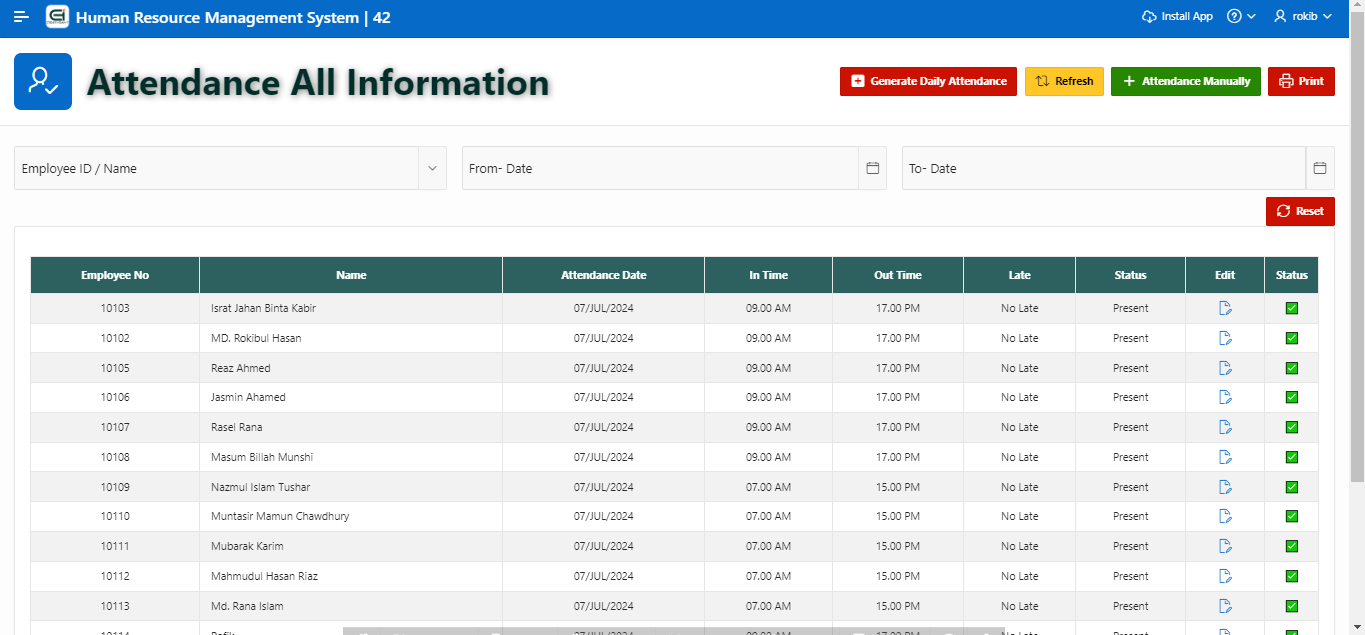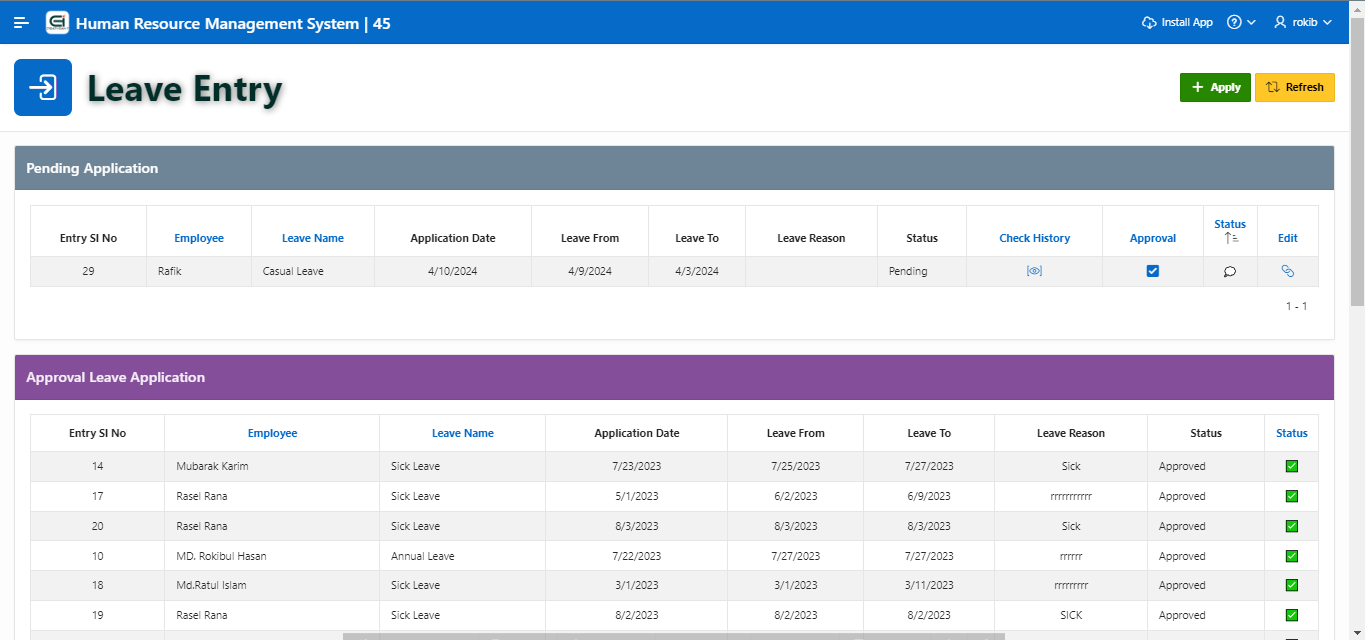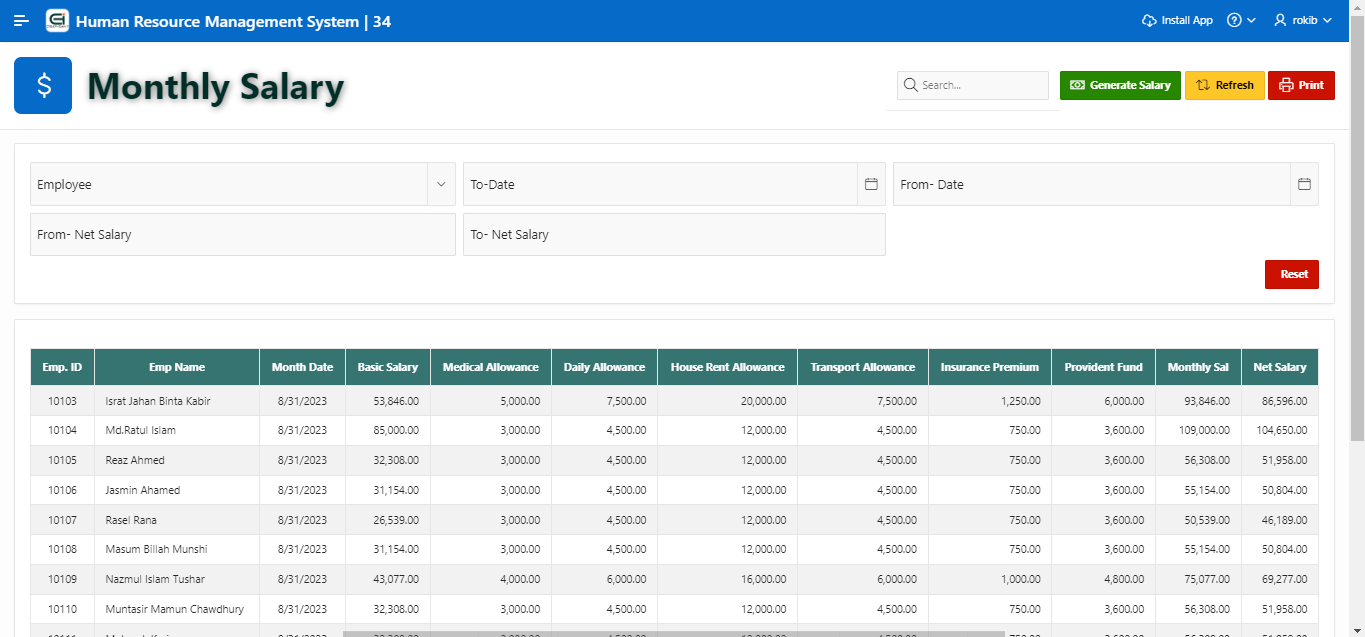A Human Resource Management System (HRMS) is a software solution designed to manage and streamline various HR processes within an organization. Below are some key features of a robust HRMS:
Employee Information Management
- Employee Database: Centralized storage for employee details, including personal information, job history, qualifications, and contact information.
- Document Management: Secure storage and easy retrieval of important documents such as contracts, IDs, and certifications.
Recruitment and Onboarding
- Applicant Tracking: Manage job postings, track applications, schedule interviews, and communicate with candidates.
- Onboarding: Streamlined process for onboarding new employees, including task assignments, document submissions, and introductory training.
Payroll Management
- Salary Calculation: Automated payroll processing including salary calculations, deductions, bonuses, and reimbursements.
- Tax Management: Calculation and management of tax deductions, compliance with tax regulations, and generation of tax-related reports.
Time and Attendance Management
- Time Tracking: Record working hours, overtime, and leave using biometric systems or manual entry.
- Leave Management: Track employee leave requests, approvals, and balances for various leave types (e.g., sick leave, vacation).
Performance Management
- Goal Setting: Set and track individual and team performance goals.
- Performance Reviews: Facilitate periodic performance evaluations, 360-degree feedback, and appraisal processes.
- Training and Development: Manage employee training programs, track progress, and assess skill development.
Benefits Administration
- Benefits Management: Administer employee benefits such as health insurance, retirement plans, and other perks.
- Self-Service Portal: Employees can view and manage their benefits, enroll in plans, and access related information.
Compliance and Reporting
- Regulatory Compliance: Ensure compliance with labor laws, industry regulations, and company policies.
- Reporting and Analytics: Generate detailed reports on various HR metrics such as turnover rates, recruitment efficiency, and employee satisfaction.
Employee Self-Service
- Self-Service Portal: Allow employees to update personal information, request leave, view pay slips, and access company policies.
- Mobile Access: Enable access to HRMS features via mobile devices for convenience.
Succession Planning
- Career Pathing: Identify and develop future leaders within the organization through career path planning and talent management.
- Skill Gap Analysis: Identify skill gaps and plan for training and development to address them.
Integration Capabilities
- Third-Party Integration: Seamless integration with other enterprise systems such as ERP, CRM, and accounting software.
- API Support: Provide APIs for custom integrations and data exchange with other systems.
Security and Data Privacy
- Data Security: Ensure data security through encryption, access controls, and regular audits.
- Privacy Compliance: Adhere to data privacy regulations like GDPR, ensuring employee data is handled responsibly.
Implementing an HRMS with these key features can significantly enhance the efficiency and effectiveness of HR operations, leading to improved employee satisfaction and organizational performance.


